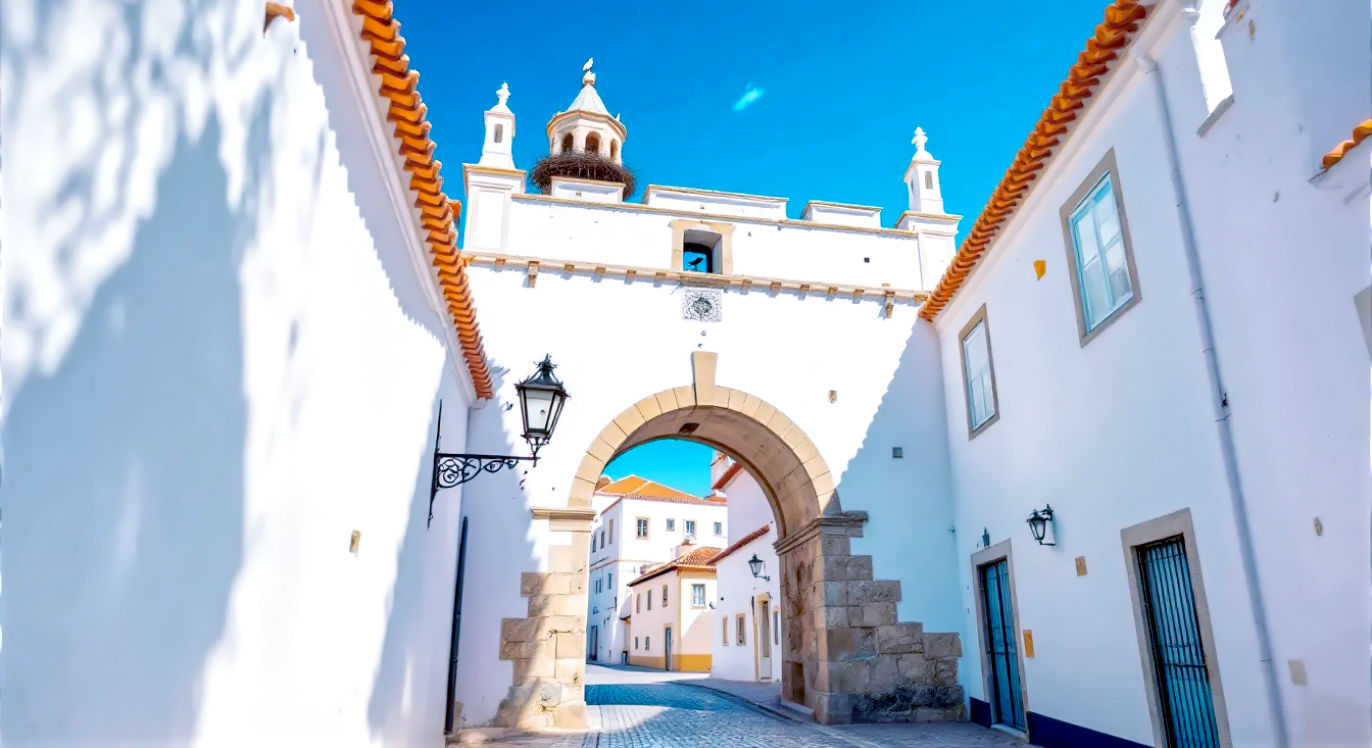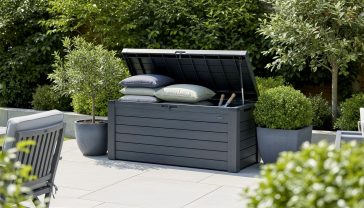Where is Faro? Your Definitive Guide to the Algarve’s Capital
More than just an airport, Faro is the historic capital of the Algarve. Explore its walled old town, unique lagoon, and see why it’s the perfect base.

This post may contain affiliate links. If you make a purchase through these links, we may earn a commission at no additional cost to you.
For millions of Brits, the word “Faro” means just one thing: the airport. It’s the noisy, bustling gateway to the Algarve, a place you rush through to get to a sun lounger in Albufeira or a golf course in Vilamoura. You grab your bags, find your transfer, and the city itself becomes a blur in the rearview mirror.
But what if I told you that by doing that, you’re missing a trick? A big one.
Faro is so much more than its runway. It’s the Algarve’s capital, a proper, living city with a history that stretches back thousands of years. It’s a place of cobbled streets enclosed by ancient walls, of stork nests perched on church towers, and of a breathtaking natural lagoon teeming with wildlife. It’s a city where you can sip a strong coffee in a sun-drenched square in the morning and be on a deserted island beach by the afternoon.
This isn’t just another travel guide. This is the story of Faro, the real Faro. We’ll peel back the layers, moving beyond the airport terminal to uncover the authentic heart of southern Portugal. We’ll explore its fascinating past (including a rather cheeky raid by an English Earl), dive into its incredible food scene, and show you why this overlooked city might just be the perfect base for your entire Algarve adventure. So, buckle up. It’s time to discover the gateway you’ve been flying over for years.
The Big Question: Where Exactly is Faro?
Let’s get our bearings. If you’ve ever wondered precisely where Faro is, you’re not alone. It’s a name we hear all the time, but its exact spot on the map can be a bit fuzzy.
Pinpointing Faro on the Map
Pop open Google Maps and look at the very bottom of Portugal. Faro is the capital city of the Algarve region, which makes up the country’s entire southern coastline. It sits right on the Atlantic coast, but with a twist. The city isn’t slammed against the open ocean like many resorts. Instead, it’s gracefully perched on the edge of the Ria Formosa, a stunning system of saltwater lagoons and barrier islands that acts as a natural buffer from the sea.
Its coordinates are roughly 37.0176° N, 7.9351° W. To give you some context, it’s about 170 miles (275 km) south of Lisbon, Portugal’s capital. If you were to drive east along the coast, you’d hit the Spanish border in less than an hour. This strategic position has made it a vital hub for trade, travel, and culture for centuries.
Faro’s Role: More Than Just an Airport
While Faro Airport (FAO) is undoubtedly the transport heart of the region, the city itself is its administrative and cultural soul. This is where you’ll find the region’s main university, a bishopric, and the levers of local government.
This gives Faro a different vibe from the purpose-built holiday towns dotted along the coast. It’s a working city, with a year-round population of over 60,000 people. This means it doesn’t just pack up and go quiet in the winter. It has an authenticity that can be hard to find elsewhere—a sense that you’re experiencing a real slice of Portuguese life, not just a tourist bubble. It’s the perfect blend: a historic, charming city that also happens to be the most convenient travel hub in southern Portugal.
Getting to Faro from the UK: Your Journey to the Sun
For Brits, getting to Faro is easier than a weekend trip to Cornwall (and often sunnier). Its airport is one of the best-connected in Europe for UK flights, especially during the holiday season.
Flying into Faro Airport (FAO)
Almost every major UK airport, and many regional ones, offers direct flights to Faro. From London (Heathrow, Gatwick, Stansted, Luton) to Manchester, Birmingham, Bristol, Glasgow, Edinburgh, and Belfast, you’re never far from a departure gate.
- Airlines: The route is dominated by budget-friendly carriers like Ryanair, easyJet, and Jet2, making it an affordable getaway. You’ll also find flights from flag carriers like British Airways.
- Flight Time: The journey is blissfully short. You’re looking at around 2 hours and 30 minutes to 3 hours in the air. You can have breakfast in rainy Manchester and be having a late lunch of grilled sardines in sunny Faro.
From Tarmac to Town: Airport to City Centre
Faro’s airport is conveniently located just 4 miles (7 km) from the city centre, so you won’t waste precious holiday time on a long transfer.
- Bus: The cheapest and easiest option. The Próximo bus number 16 runs regularly between the airport and the main bus station in the city centre (Avenida da República). The journey takes about 20 minutes and costs just a couple of Euros. You buy your ticket from the driver. Simple.
- Taxi/Uber: A taxi from the rank outside arrivals will cost around €15-€20 and take about 10-15 minutes. Uber and Bolt are also widely available and often slightly cheaper. It’s a hassle-free way to get straight to your hotel with your bags.
A Stroll Through Time: The Fascinating History of Faro
Faro’s calm, sun-bleached streets hide a dramatic past filled with Romans, Moors, earthquakes, and even English pirates. Understanding its history makes exploring the city today a much richer experience.
From Roman Port to Moorish Stronghold
The story begins over 2,000 years ago when the Romans founded a bustling port here called Ossónoba. It was a prosperous place, known for exporting fish and salt across the empire. After the Romans left, the Visigoths took over, but the most significant change came in the 8th century with the arrival of the Moors from North Africa.
The Moors ruled for over 500 years, renaming the city Santa Maria Ibn Harun. They built up its defences, enclosing the city within strong walls—the very same walls you can still see in the Old Town today. Faro became a centre of learning and culture, known for its poetry and scholarship.
An Unlikely English Connection: The Earl of Essex’s Raid
Here’s a story you won’t hear in Albufeira. In 1596, during a period of conflict between England and Spain (who ruled Portugal at the time), Queen Elizabeth I’s favourite, Robert Devereux, the 2nd Earl of Essex, sailed a fleet into Faro. His men sacked the town and, in a very English act of looting, stole the entire library of the Bishop of Faro.
Those books were taken back to England and given to a friend, Sir Thomas Bodley, who was building a new library at the University of Oxford. And there they remain to this day, in the world-famous Bodleian Library. So, next time you’re wandering Faro’s Old Town, you can imagine English sailors running through the streets with armfuls of priceless books.
Shaken and Rebuilt: The Great Earthquake of 1755
The single most devastating event in Faro’s history was the Great Lisbon Earthquake of 1755. This catastrophic quake, followed by a tsunami and fires, flattened much of southern Portugal. Faro was hit hard. Most of its medieval and Renaissance buildings were destroyed.
However, the city rebuilt. The sturdy Moorish city walls had largely survived, protecting the Old Town within. The buildings you see today mostly date from the 18th and 19th centuries, giving Faro a graceful, uniform architectural style. The earthquake is the reason Faro looks the way it does—a city reborn from disaster.
The Heart of the City: Exploring Faro’s Must-See Sights
Faro isn’t huge, which makes it a joy to explore on foot. Its main attractions are clustered together, offering a perfect mix of history, culture, and relaxation.
The Walled City: Stepping into the Cidade Velha (Old Town)
The best place to start is the Cidade Velha, or Old Town. You enter this historic heart through a grand neoclassical archway called the Arco da Vila. Look up as you pass through—you’ll almost certainly see a huge, messy stork’s nest perched on top of the tower. Storks have been nesting here for centuries, and they’ve become the unofficial symbol of the city.
Inside the walls, the modern world melts away. You’ll find yourself in a peaceful maze of narrow, cobbled streets, lined with whitewashed houses and shaded squares. At its centre is the Largo da Sé, a beautiful square planted with orange trees.
Here you’ll find the Sé de Faro (Faro Cathedral). It’s a bit of a historical jumble—part Gothic, part Baroque—thanks to being rebuilt after the English raid and the earthquake. The real highlight is climbing the narrow steps of its medieval bell tower. The reward is the best panoramic view in Faro, looking out over the terracotta rooftops of the Old Town and the shimmering blue expanse of the Ria Formosa beyond.
The Chapel of Bones (Capela dos Ossos): A Macabre Masterpiece
Just outside the Old Town, attached to the beautiful Baroque church, Igreja do Carmo, lies one of Faro’s most unforgettable sights: the Capela dos Ossos, or Chapel of Bones.
It’s exactly what it sounds like. The walls and ceiling of this small chapel are meticulously decorated with the bones and skulls of over 1,000 Carmelite monks. They were exhumed from the city’s overcrowded cemeteries in the 19th century. It sounds gruesome, but it’s surprisingly beautiful and thought-provoking. An inscription over the door reads, “Pára aqui a pensar que a este estado hás-de chegar”—”Stop here and think, for this state you will reach.” It’s a stark reminder of mortality, and a truly unique piece of history.
Beyond the Walls: Modern Faro and the Marina
Outside the Old Town, Faro transforms into a lively modern city. The main shopping district is centred around the pedestrianised Rua de Santo António, full of high-street brands, independent shops, and pavement cafés perfect for people-watching.
A short walk away is the Faro Marina. It’s a lovely place for a stroll, admiring the yachts bobbing in the water. The marina is lined with restaurants and bars, making it a popular spot for an evening meal or a sunset drink, with views looking out towards the Ria Formosa.
Faro’s Natural Wonder: The Ria Formosa Natural Park
This is Faro’s trump card. The Parque Natural da Ria Formosa is one of Portugal’s “Seven Natural Wonders” and it’s right on the city’s doorstep. It’s a protected coastal lagoon that stretches for 60 km along the Algarve coast, a vital wetland habitat for wildlife.
What is the Ria Formosa?
Think of it as a giant, shallow lagoon, separated from the open Atlantic by a chain of five sandy barrier islands and two peninsulas. This creates a unique landscape of salt marshes, channels, and sandbanks that are constantly shifting with the tides.
It’s an incredibly important place for birds. It serves as a crucial stopping point for thousands of birds migrating between Europe and Africa. It’s also a permanent home to many species, including the graceful Greater Flamingo and the quirky Eurasian Spoonbill. The waters are also a nursery for seafood, making it the engine of the local fishing industry.
How to Explore the Lagoon
The best way to experience the Ria Formosa is to get out on the water. From the marina, you can join a variety of guided boat trips.
- Eco-Tours: These are often led by marine biologists who can tell you all about the lagoon’s fragile ecosystem and help you spot wildlife.
- Catamaran Trips: A relaxing way to cruise through the channels and stop for a swim.
- Kayaking: For the more adventurous, paddling through the calm waters of the lagoon offers a peaceful, up-close perspective.
The Barrier Islands: Faro’s Secret Beaches
The islands that protect the lagoon are home to some of the most beautiful and unspoiled beaches in the entire Algarve. Ferries run regularly from a jetty near the Old Town (Porta Nova pier), making them easy to visit.
- Ilha Deserta (Deserted Island): The name says it all. This is a 7km-long stretch of pristine, uninhabited sand. There is only one building on the entire island—an excellent, eco-friendly restaurant. It’s the perfect place to truly escape the crowds.
- Ilha da Culatra & Ilha do Farol: These are two parts of the same island. Culatra is a small, car-free fishing community with sandy tracks instead of roads. It’s a fascinating glimpse into a traditional way of life. Further along is Farol (meaning “lighthouse”), named after its impressive lighthouse. Both have beautiful, long beaches and a few simple cafés for fresh fish.
- Praia de Faro (Faro Beach): This is the most accessible of the islands, as you can reach it by road bridge as well as by ferry. It’s a long, narrow sandbar with the calm lagoon on one side and the Atlantic waves on the other. It’s more developed, with lots of bars and restaurants, and is popular with Faro locals.
A Taste of the Algarve: What to Eat and Drink in Faro
The food in Faro is a celebration of the sea and the sun. It’s simple, fresh, and delicious. You won’t find a lot of fancy sauces or complicated techniques; the quality of the ingredients speaks for itself.
Fresh from the Sea
Seafood is king here. The best place to see the incredible variety on offer is at the Mercado Municipal (Municipal Market). It’s a bustling indoor market where you’ll see locals buying everything from giant tuna and glistening sea bass to buckets of tiny clams.
- Cataplana de Marisco: This is the signature dish of the Algarve. It’s a seafood stew, packed with fish, prawns, clams, and mussels, cooked with onions, garlic, tomatoes, and herbs. It’s cooked and served in a special copper pan called a cataplana, which is shaped like a clam and seals in all the flavours. It’s usually for two people to share and is an absolute must-try.
- Sardinhas Assadas (Grilled Sardines): Especially in the summer, the smell of grilling sardines is everywhere. They are served simply, grilled over charcoal with a sprinkle of sea salt, and usually come with a salad and boiled potatoes.
Sweet Treats and Local Tipples
You can’t visit Portugal without indulging in a Pastel de Nata. This iconic custard tart, with its flaky pastry and caramelised top, is the perfect companion to a mid-morning coffee (um bica).
To drink, try the local Vinho Verde (a young, slightly sparkling white wine) or a robust red from the Alentejo region just to the north. For the brave, there’s Medronho, a potent spirit made from the fruit of the strawberry tree. Locals call it firewater, so you’ve been warned!
Where to Eat: From Hidden Tascas to Marina Views
For the most authentic food, head into the small backstreets away from the main squares. Look for the small, family-run restaurants called tascas. The menu might be simple, but the food will be fresh, homemade, and incredibly good value. The restaurants around the marina offer great views but can be a bit more expensive.
Faro as Your Basecamp: The Perfect Gateway to the Algarve
This is where Faro truly shines. Its central location and excellent public transport connections make it the single best base for exploring the entire Algarve region, without needing to hire a car.
Why Faro is the Ideal Hub
Faro sits right in the middle of the Algarve’s coastal railway line, which runs from Lagos in the west all the way to Vila Real de Santo António on the Spanish border in the east. The city’s bus station is also the central hub for the entire region. This means you can wake up in Faro, hop on a train or bus, and spend the day exploring almost anywhere on the coast before returning to the relative peace of the city in the evening.
Our Top Day Trips from Faro
Here are a few easy and rewarding day trips you can take using public transport.
- East to Tavira: (Approx. 40 mins by train). Often called the prettiest town in the Algarve, Tavira is a delight. It straddles the Gilão River, with a Roman bridge connecting its two halves. It’s a wonderfully relaxing place to just wander and soak up the atmosphere.
- West to Lagos: (Approx. 1 hour 45 mins by train). Famous for its dramatic coastline, Lagos is home to the stunning rock formations of Ponta da Piedade and beautiful beaches like Praia Dona Ana. The town itself is also a lively place with a great buzz.
- Inland to Loulé: (Approx. 40 mins by bus). If you’re here on a Saturday, a trip to Loulé is a must. Its famous covered market, in a beautiful neo-Moorish building, is a feast for the senses. It’s a great place to buy local crafts, cork products, and delicious regional foods.
- For Resort Lovers – Albufeira & Vilamoura: If you do want a taste of the big resort experience, both are easily reachable. Albufeira (45 mins by bus) is known for its huge beach and lively nightlife. Vilamoura (45 mins by bus) is famous for its swanky marina and championship golf courses.
Getting Around the Algarve
- Train: The train is cheap, comfortable, and generally reliable. It’s perfect for exploring the coastal towns.
- Bus: The bus network is more extensive and can get you to inland towns and smaller villages that the train doesn’t serve.
- Car Hire: While not essential if you’re staying in Faro, hiring a car for a day or two can give you the freedom to explore the more remote beaches and countryside of the western Algarve.
Your Faro Holiday Planner: Practical Tips for Brits
A little bit of planning goes a long way. Here are some quick tips for your trip.
When to Go: A Guide to the Seasons
- Spring (April-May) & Autumn (Sep-Oct): This is the sweet spot. The weather is warm and sunny but not scorching hot. The sea is warm enough for swimming, and there are far fewer crowds than in summer.
- Summer (June-Aug): This is peak season. It’s hot, busy, and more expensive. Great for a classic beach holiday, but be prepared for crowds.
- Winter (Nov-Mar): The Algarve is a great winter sun destination. You’ll have daytime temperatures of around 16-18°C. It won’t be beach weather, but it’s perfect for exploring the towns and enjoying the quiet.
The Essentials: Weather, Currency, and Language
| Category | Details |
|---|---|
| Weather | Mediterranean climate. Hot, dry summers and mild, wetter winters. 300+ days of sun per year. |
| Currency | Euro (€). Card payments are widely accepted, but it’s good to have some cash for small cafés or markets. |
| Language | Portuguese. English is very widely spoken in tourist areas, hotels, and restaurants. A simple “Olá” (hello) and “Obrigado/a” (thank you) will be much appreciated. |
| Time Zone | Same as the UK (GMT). No need to change your watch! |
| Plugs | Type F (the standard two-pin European plug). You’ll need an adapter. |
A Final Word: Why Faro Deserves More Than a Flying Visit
Faro might be the gateway to the Algarve, but it’s also a destination in its own right. It offers something that many of the resorts, for all their glorious beaches and amenities, cannot: a sense of place, a connection to history, and a glimpse into the real Portugal.
By treating it as just an airport, we miss the quiet charm of its walled Old Town, the breathtaking natural beauty of the Ria Formosa, and the simple pleasure of its authentic local life. So next time you book a flight to FAO, don’t just rush through. Stay for a day, or two, or even make it your base. Come and discover the gateway. You might just find it’s the best part of your holiday.
Further Reading
To continue your research and planning, these resources are highly recommended:
- Visit Portugal: The official tourism board website with reliable information on the Algarve and Faro.
- Lonely Planet – Faro: A trusted source for in-depth travel advice and practical tips.
- The Guardian Travel – Algarve: Features insightful articles and travel guides from a British perspective.






